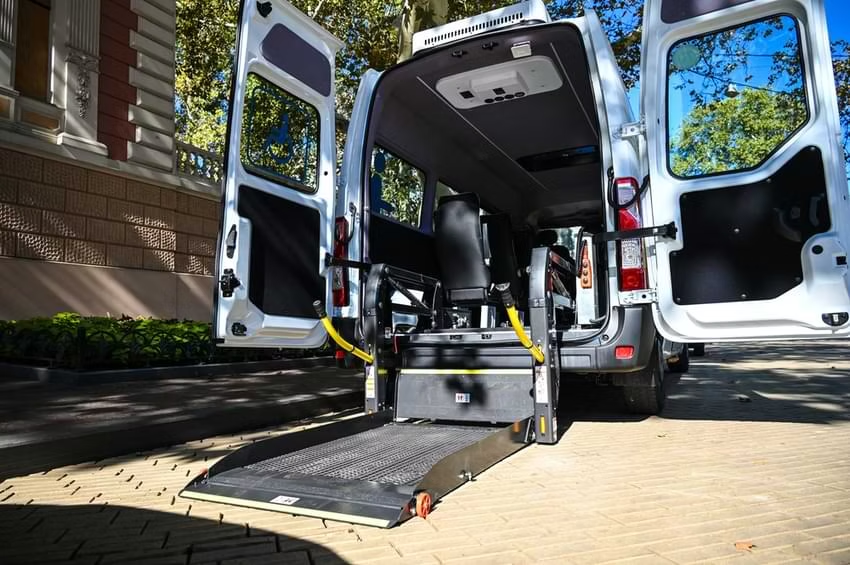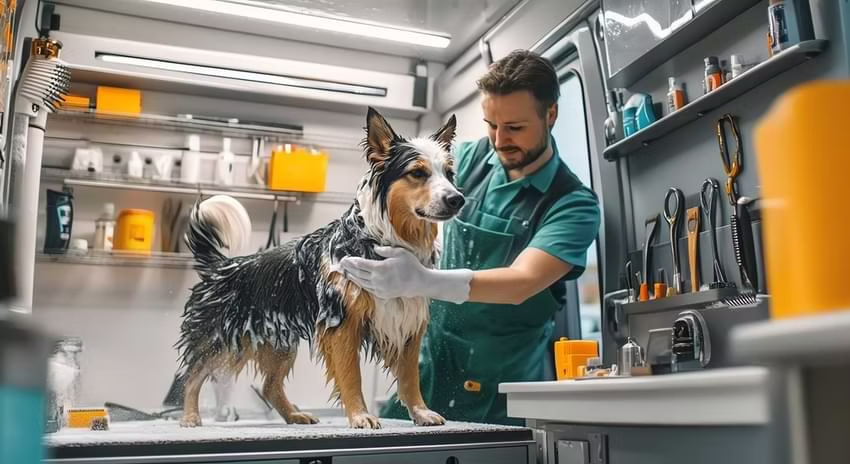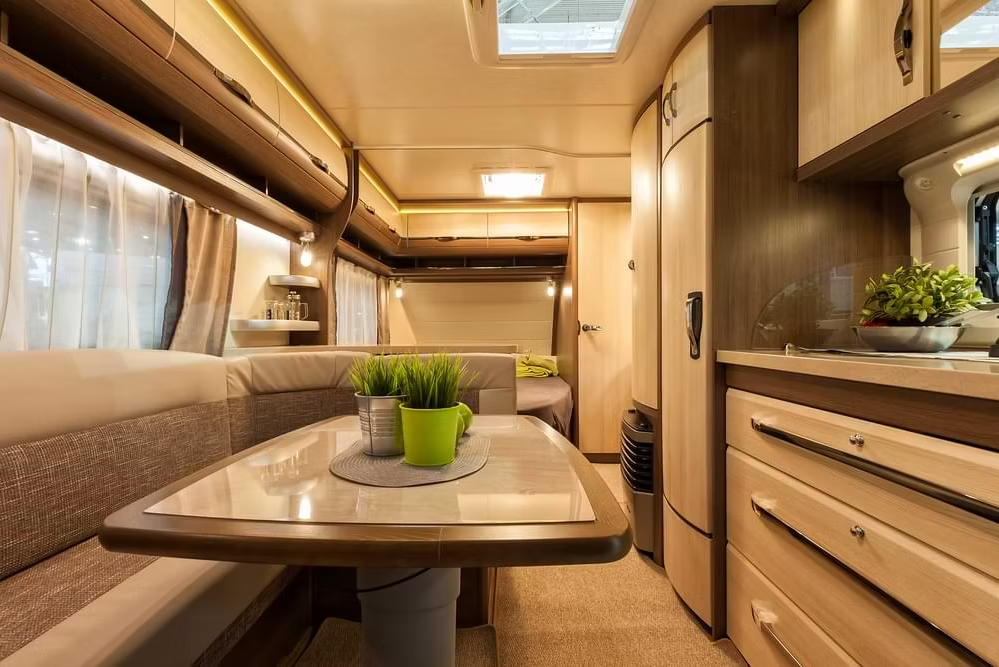When you’re navigating life with mobility challenges—or supporting someone who is—it can feel overwhelming to sort through all the decisions that come with modifying a vehicle. The stakes are high. You need something safe, functional, and tailored to your needs. But with so many technical terms and conversion options, knowing where to start can be the hardest part.
We got it. Choosing to invest in an accessible vehicle conversion is not just about transportation. It’s about independence, comfort, and long-term reliability. In this blog, we’ll guide you through the most important considerations before modifying your vehicle, so you can move forward with confidence.
What is a wheelchair accessible vehicle conversion?
A wheelchair accessible vehicle conversion involves structural modifications, like lowering the floor, adding ramps, or installing lifts, to allow individuals with mobility limitations to enter, exit, and travel in a vehicle safely and comfortably.
Know Your Mobility Needs First
Before jumping into product specs or pricing, take a step back. Ask yourself: What does daily mobility look like for me or the person I’m supporting?
Think about:
-
Whether the user will be driving or riding as a passenger?
-
How often will the vehicle be used?
-
What kind of terrain or weather is common in your area?
-
Your parking space limitations (garage height, street width, etc.
For example, someone commuting daily might need more comfort and automation than someone using the vehicle occasionally. Understanding these needs helps determine the right base vehicle and conversion features.
Choose the Right Vehicle Platform
Not all vehicles are created equal when it comes to accessibility. Vans and SUVs are the most common choices, but the vehicle you start with impacts your options for conversion.
-
Minivans: Great for lowering floors and side-entry ramps
-
Full-size vans: Ideal for families or commercial uses with more headroom
-
SUVs: A newer option for conversions, offering style and clearance, but typically more limited in space
It’s essential to choose a vehicle that fits your budget, lifestyle, and long-term accessibility needs. The National Mobility Equipment Dealers Association (NMEDA) provides guidelines for selecting appropriate models.
One of the biggest decisions you’ll face is choosing between side-entry and rear-entry access.
Side-entry conversions offer better driver access and more seating flexibility. They’re perfect if the wheelchair user wants to drive or sit up front.
Rear-entry conversions are typically more affordable and easier to park. They’re often a better fit for families or caregivers transporting someone who uses a wheelchair.
Each layout has trade-offs, so test both if possible. Consider who’s using the vehicle most often and whether you’ll be parking in garages or parallel spaces frequently.
Safety and Compliance Standards Matter
Any time you’re modifying a vehicle, safety should be top of mind. Reliable, accessible vehicle conversions must meet rigorous safety and structural standards. Look for conversion companies that follow:
-
FMVSS (Federal Motor Vehicle Safety Standards)
-
ADA (Americans with Disabilities Act) guidelines
-
Crash test certifications for the converted vehicle
Make sure the company is a certified member of NMEDA or the Adaptive Driving Alliance. These memberships ensure that providers follow national safety and quality standards.
Understand the Full Cost—Not Just the Upfront Price
Mobility vehicle conversions can range from $10,000 to over $40,000, depending on the level of customization and technology. It’s easy to focus on sticker price, but the true cost includes:
Insurance considerations
Ask about service packages and local support. Also, check if your business can benefit from the Disabled Access Credit or other tax incentives.
Work With a Certified Conversion Specialist
Accessible vehicle conversions aren’t a DIY project. You’ll need an experienced upfitter who understands both vehicle mechanics and mobility requirements. Partnering with the right specialist ensures:
-
Proper installation of lifts, hand controls, and ramps
-
Integration of electrical systems with vehicle controls
-
ADA-compliant layout and accessibility
It’s also crucial to ask about post-installation support and whether they offer in-person consultations. A reputable company should walk you through everything from financing to training.
Don’t Forget About Comfort and Convenience
Yes, safety and compliance are essential—but comfort matters, too.
Modern conversions offer a variety of features that make a world of difference:
-
Remote control ramp deployment
-
Swivel driver seats
-
Climate control systems tailored for accessible seating positions
-
Quiet cabin and noise reduction modifications
A well-designed conversion doesn’t just move you from A to B—it supports your quality of life every step of the way.
Think Ahead: Future-Proofing Your Conversion
Your needs today might not be the same five years from now. That’s why it’s smart to invest in a flexible layout and upgrade options.
Ask your conversion specialist:
-
Can this vehicle be updated with new technology later?
-
Will I be able to change seating configurations?
-
What happens if my mobility needs increase?
Planning for the future protects your investment and reduces the need for another costly conversion down the road.
Test Drive Before You Commit
Nothing replaces first-hand experience. Ask to visit a dealership or upfitter to explore demo vehicles and test key features.
Bring the person who will be using the vehicle regularly. Let them sit, move, and experience space. Their comfort and confidence should be the priority.
You can also visit a Vocational Rehabilitation Center or a nonprofit in your area for trial sessions and expert input on adaptive driving.
Start Your Mobility Journey with a Trusted Partner
There’s a lot to think about when it comes to wheelchair accessible vehicle conversions, but you don’t have to do it alone. From selecting the right base vehicle to ensuring safety, comfort, and future flexibility, the best results come from expert guidance.
At Automotive Upfitters, we specialize in helping businesses and individuals navigate these decisions with confidence. Our team works with certified mobility specialists and leading vehicle platforms to create conversions that truly meet your needs today and tomorrow.
Ready to take the next step? Contact Automotive Upfitters today to schedule a consultation or explore available options. Your mobility journey starts with the right partner.




